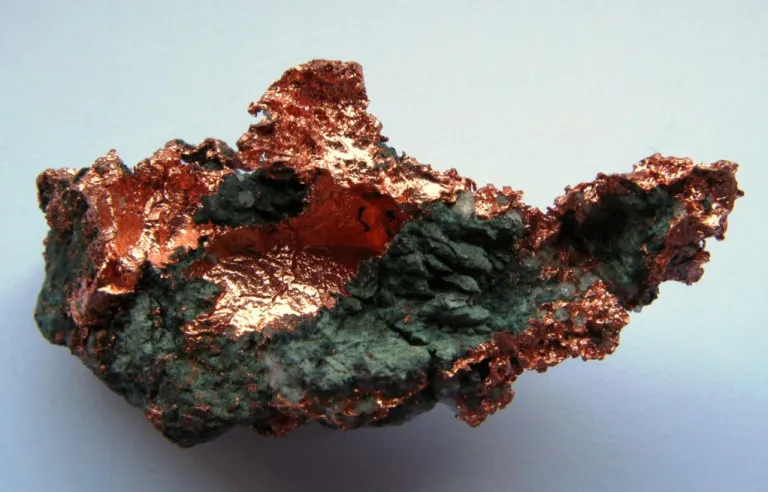
Appearance
On recently shattered surfaces, it appears opaque, bright, and shiny salmon pink, but it quickly becomes boring brown. Although they are rare, crystals are either cubic or dodecahedral in shape and are frequently seen in branching aggregates. Most were discovered as amorphous, branched, or flattened lumps.
Geographical Distribution
Despite the fact that practically every continent has economic resources of copper ores, seven nations account for 70% of the world’s known reserves: Chile, the US, Russia, Congo (Kinshasa), Peru, Zambia, and Mexico.
History
Most likely, mankind initially used copper as a metal. By 8000 BCE, Neolithic people are thought to have utilized stone in place of stone. Egyptians began casting copper in molds in 4000 BCE. It was first alloyed with tin to create bronze by 3500 BCE.
Chemical Composition and Types
Copper minerals can be categorized according to their crystal structure and chemical makeup. Typical classifications include the following:
- Native copper: Copper that naturally exists as pure metal, usually in the form of wires or nuggets.
- Oxides: The minerals cuprite and tenorite are examples of copper oxides.
- Carbonates: Minerals that are copper carbonate include azurite (Cu3(CO3)2(OH)2) and malachite (Cu2CO3(OH)2).
- Silicates: Dioptase (CuSiO2(OH)2) and chrysocolla (CuSiO3·2H2O) are two examples of copper silicate minerals.
- Native elements: In addition, pure metallic copper can exist in the form of wire-like or dendritic structures.
Common
The characteristics of a few typical copper minerals are as follows:
- Chalcopyrite: With the chemical formula CuFeS2, this is the most prevalent copper mineral. Chalcopyrite is a metallic-lustrous yellow stone with a brassy yellow hue and a Mohs hardness of 3.5–4. It frequently coexists with other sulphide minerals.
- Bornite: Because of its iridescent purple-blue coloring, bornite is often referred to as peacock ore. Its chemical formula is Cu5FeS4. It is frequently found in hydrothermal veins alongside other copper minerals and has a Mohs hardness of 3.
- Malachite: This green mineral, which is composed of copper ore deposits, has the chemical formula Cu2CO3(OH)2. It is frequently used as a decorative stone and has a Mohs hardness of 3.5–4.
- Cuprite: This crimson mineral, which has the chemical formula Cu2O, is created when copper sulfides oxidize. On the Mohs hardness scale, it is 3.5–4 and is frequently found in combination with other copper minerals.

Uses
Copper’s superior electrical conductivity, malleability, ductility, and resistance to corrosion make it suitable for a wide range of industries and applications. Among the principal applications for copper are the following:
- Electrical industry: Copper is a highly conductive metal that finds extensive application in power generation and transmission as well as electrical wiring. In addition, it is employed in the manufacturing of switches, transformers, motors, and other electrical equipment.
- Construction industry: Because copper is long-lasting and resistant to corrosion, it is utilized in plumbing, roofing, and cladding. Air conditioning, ventilation, and heating systems also use it.
- Automotive industry: Heat exchangers, electrical wires, and radiators are all made of copper.
- Medical industry: Because of its high electrical conductivity and radiopacity, copper is employed in medical equipment like X-ray machines.
- Coinage: Because copper is strong and resistant to corrosion, it is used to make coins.
- Decorative applications: Copper’s appealing reddish-brown hue and malleability make it a popular material for sculptures, jewelry, and other ornamental applications.
- Antimicrobial properties: Due to its inherent antibacterial qualities, copper is utilized in the manufacturing of door knobs, medical equipment, and other high-touch surfaces in an effort to stop the spread of infection.
Table





